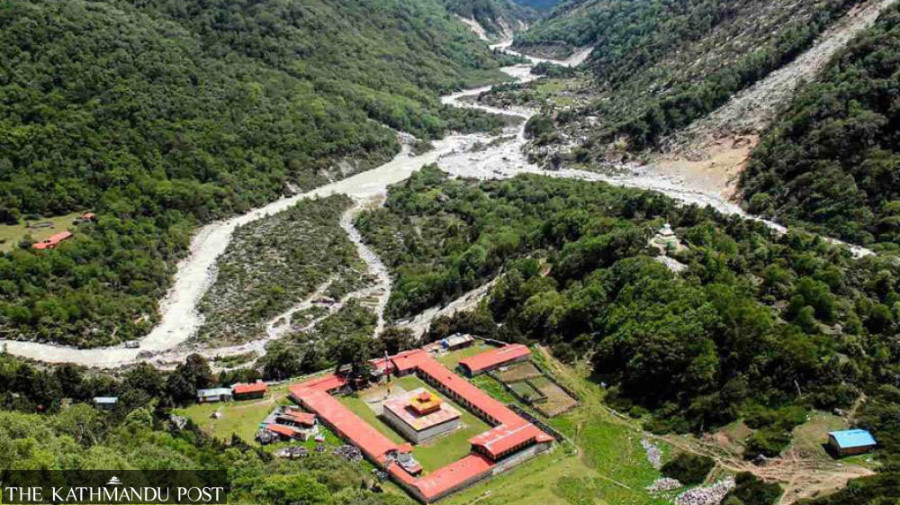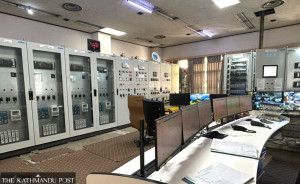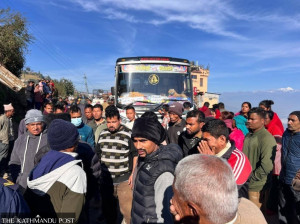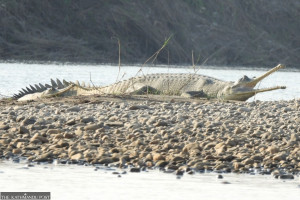Bagmati Province
Reservoir being emptied to mitigate risk of floods in Tamakoshi
The district administration of Dolakha released a notice on Friday night citing Chinese authorities’ warning of floods.
Post Report
Upper Tamakoshi hydropower project in Dolakha has begun emptying its reservoir on Saturday to mitigate the risk of floods in the Tamakoshi river.
Landslides triggered by continuous rainfall have blocked the flow of the river, on the Chinese side, leading to a formation of a lake upriver raising concerns of possible floods downstream.
The spokesperson of the Upper Tamakoshi hydropower project, Ganesh Neupane, said that the water in the reservoir has been released as the threat of floods in the Tamakoshi river is immediate.
“The Tamakoshi dam can hold the increased flow of water for about one and half hours,” Neupane told the Post on early Saturday morning. “The water is being released from the reservoir to accommodate increased flow of water in the river. This will also buy time for people to move towards safer locations.”
Neupane said that the project is aiming to decrease the water level at the dam to 1,978 metres.
“The dam is designed to hold up to 5,000 cubic metres of water,” Neupane said, “If we release water from the reservoir, it will help alleviate the threat of floods in Tamakoshi.”
The district administration of Dolakha released a notice on Friday night citing Chinese authorities’ warnings of floods.
According to Basudev Ghimire, Chief District Officer of Dolakha, landslides near border pillars 60 and 61 in Lapchi bordering China’s Tingri county have blocked the flow of the river and it threatens to cause devastation along the settlements scattered on the banks downstream.
“We have received information from the Chinese authorities about obstruction in the flow of the river caused by landslides,” said Ghimire. “We have been informed of possible floods in Tamakoshi river if the lake bursts.”
According to CDO Ghimire, security personnel from Nepal Army and Armed Police Force have been mobilised to study the current situation of the river and to move the local people from risk zones to safer locations.




 17.12°C Kathmandu
17.12°C Kathmandu












